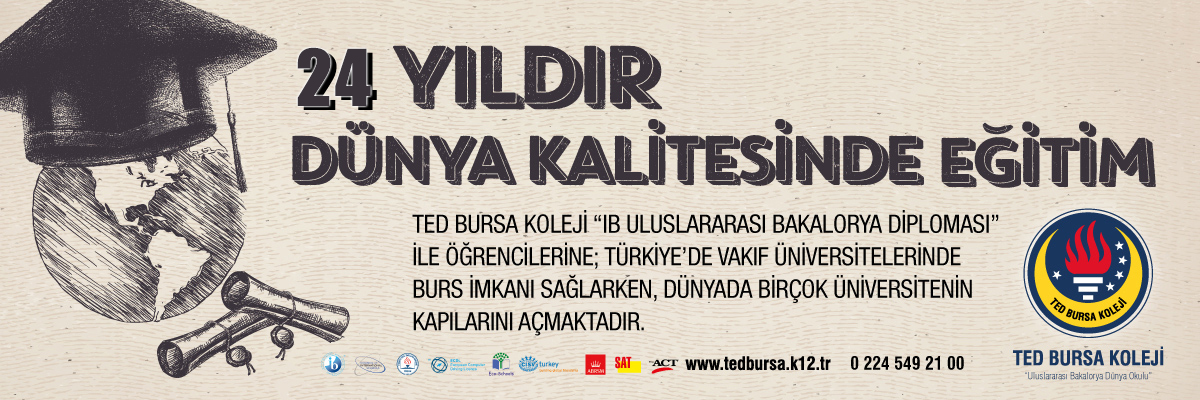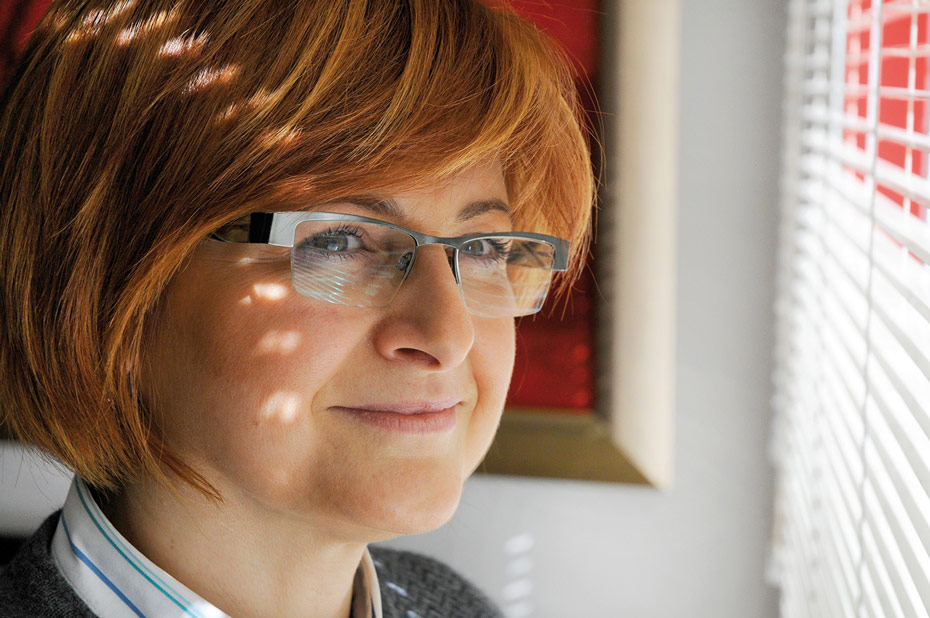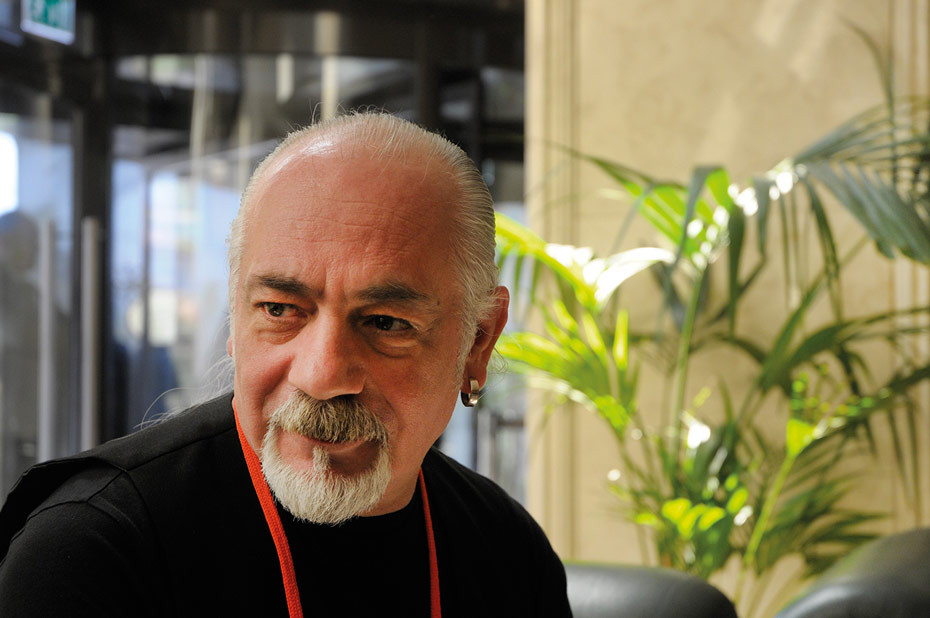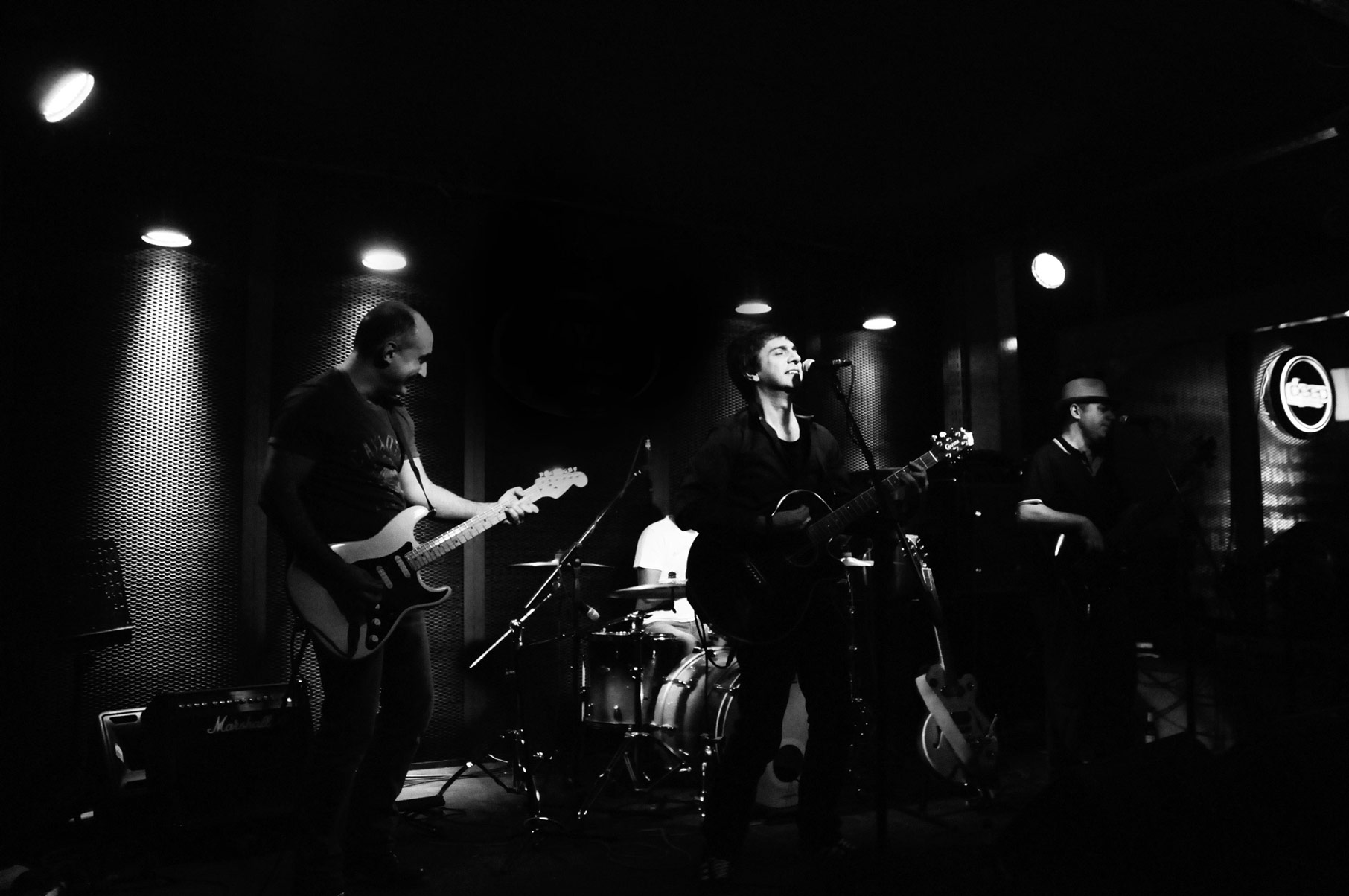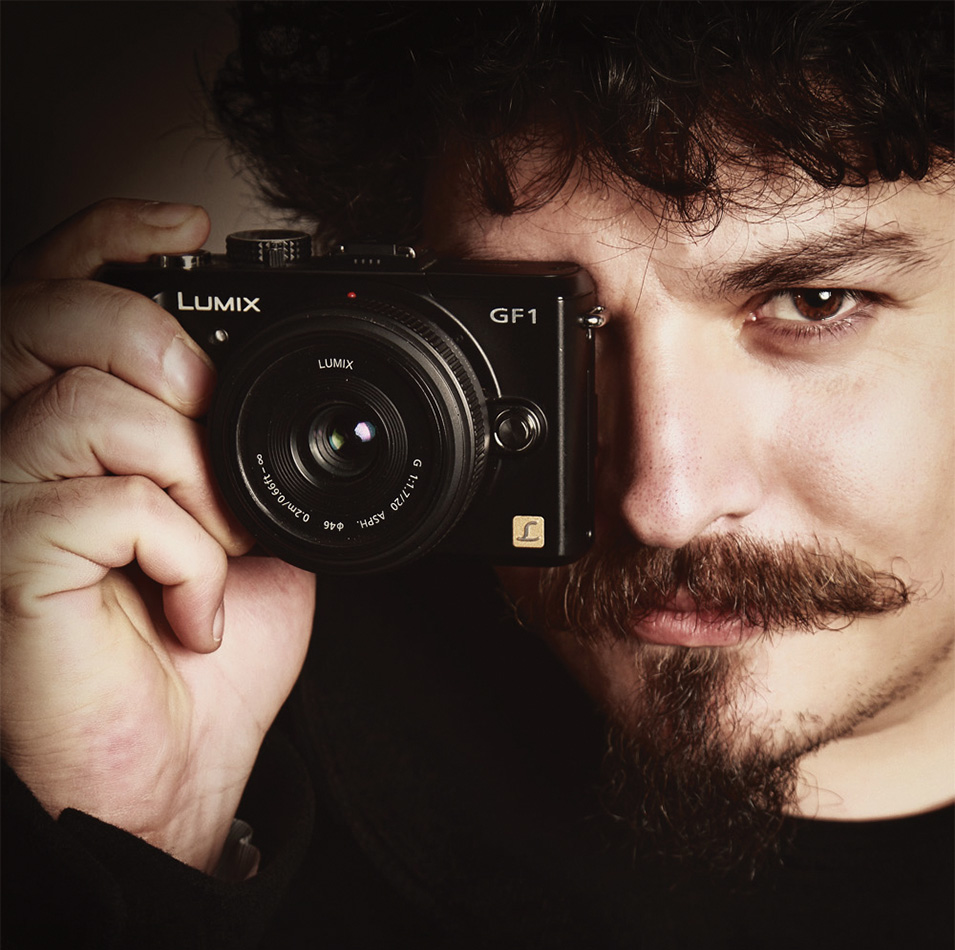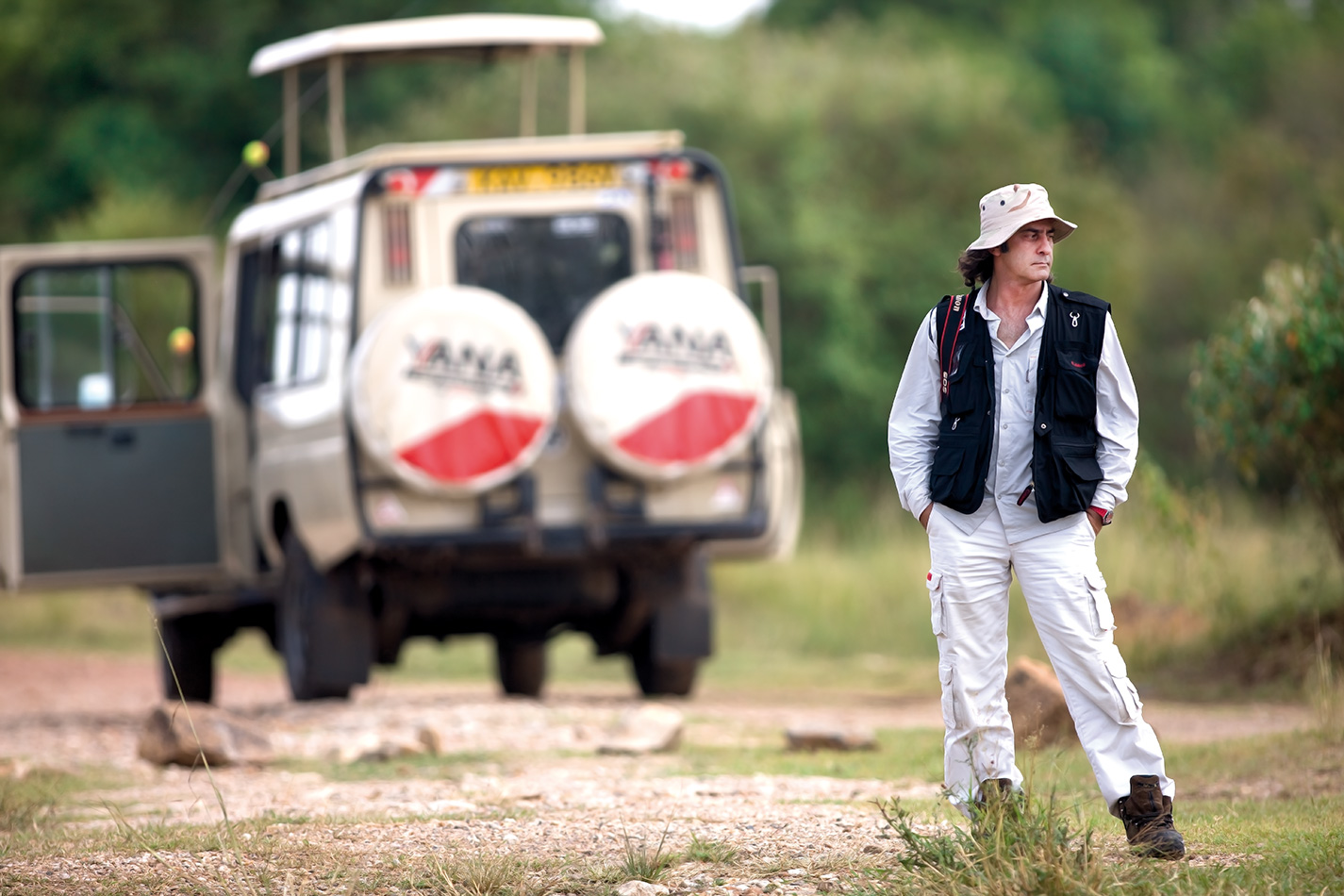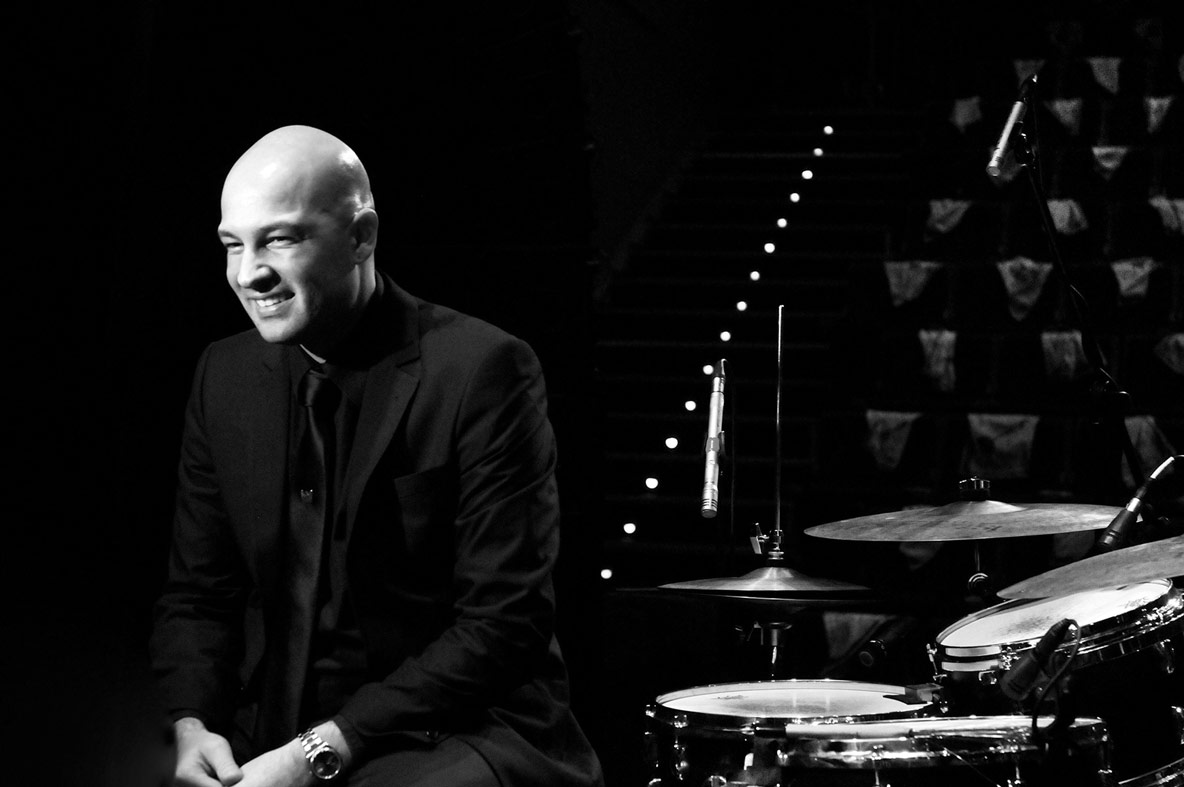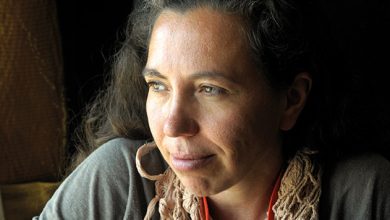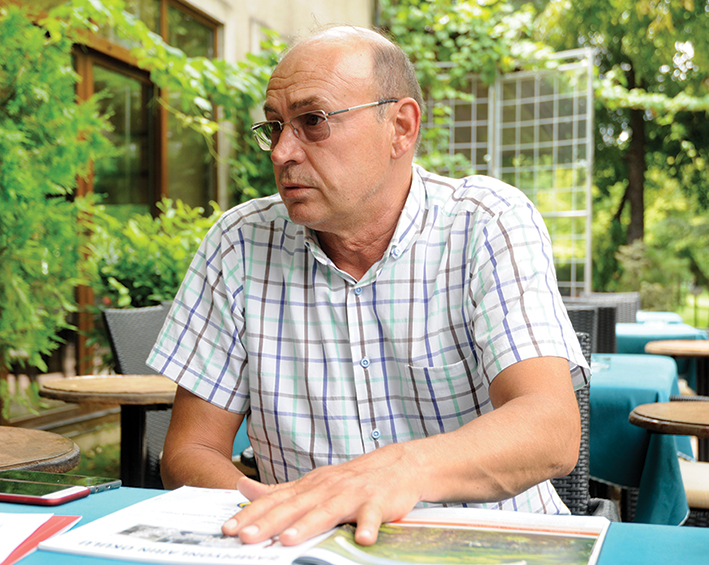Sunay Akın: “Hamakta sallanmak” sihirli bir şey…
Röportaj
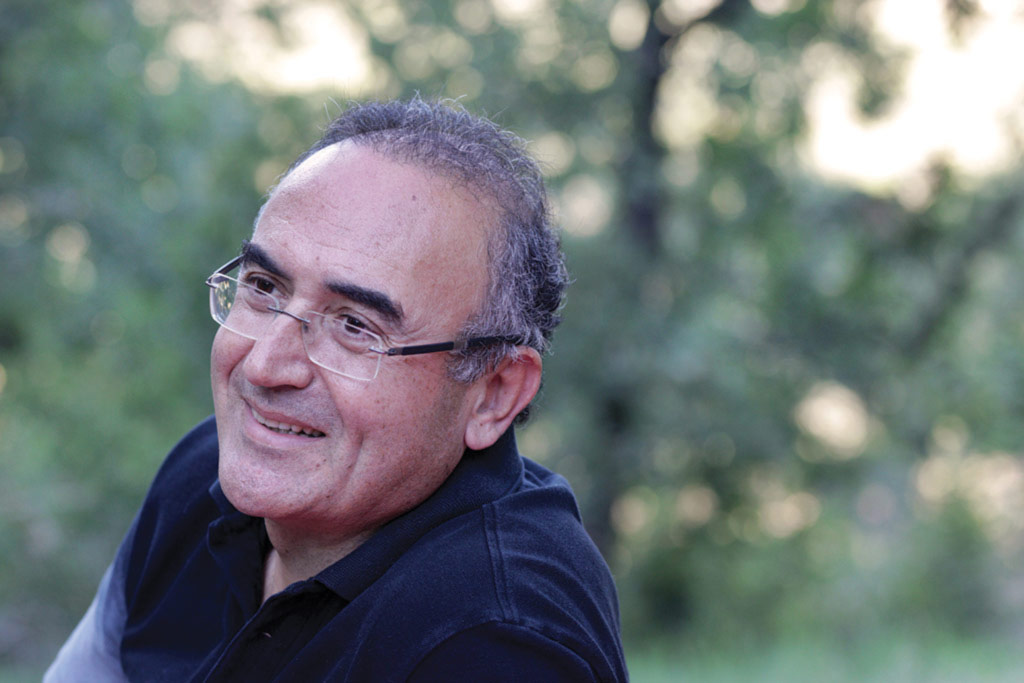
Şair, Yazar ve Müzeci Sunay Akın ile Bursa Hamak Festivali’ndeki gösterisi öncesinde festivale yakışır bir sohbet gerçekleştirdik Balat Atatürk Ormanı’nda. Çağdaş dönemin meddahı, rüzgarın esintisine yüzünü dönmüş ağaçların ve manzaranın keyfini çıkarıyor, bir yandan da gün geçtikçe azalan yeşilliğe doymaya çalışıyordu. Sohbetimizde; yanımızdan geçen sincaplar, gezintiye çıkan atlar, özlem duyduğumuz tüm güzellikler ve anılar vardı.
We had a nice chat with Poet, Author and Museum Owner Sunay Akın at the Balat Atatürk Forest before his first show at the Bursa Hammock Festival. The modern day ‘meddah[1]’ has turned his face towards the blowing wind enjoying the view of trees and the scenery while trying to get his fill of the ever decreasing greenery around him. Squirrels and horses that were running around accompanied our chat with all other natural beauties that we longed for.
[1] Public story teller
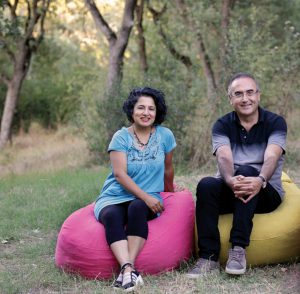
Röportaj: Sibel Bağcı Uzun Fotoğraflar: Demet Argun Güngör
Interview: Sibel Bağcı Uzun Photos: Demet Argun Güngör
Masal dinler gibi elimizi yüzümüze dayayıp dinledik onu hiç bitmesini istemeden. Bazen kartpostallardaki Bursa’nın giderek zenginleşen tarihine şaşırdık kaldık, bazen de kıymetini bilemediğimiz değerlerimize çaresizce üzüldük. Bu keyifli sohbetle, “coğrafyanın en büyük zenginlik ve kader” olduğunu bir kez daha anımsamış olduk. Hamak aşkından sanata, müzecilikten kültür politikasına kadar dolu dolu bir röportaj yapmanın mutluluğunu ve sizlere ulaştırmanın heyecanını yaşıyoruz elbette…
We rested our heads on our palms and listened to him as if listening to a fairy tale, never wanting it to end. We were sometimes left in awe at the ever enriching history of Bursa or felt a desperate sadness when faced with valuable assets that we had taken for granted. We remembered once again during this joyful interview that, “geography is the most important richness and fate”. We are of course very excited to bring you an interview on topics ranging from the love of hammocks to running a museum and culture policy…
Hazır, söyleşimizi doğada yapıyoruz, ormandan başlayalım mı? Çocukluğunuzdan güzel hatıralarınız vardır…
Bravo ne güzel hatırlattınız, ne iyi oldu. Aslında çocukluğum bu mevsimlerde hep ormanda geçiyordu. (Gözüne sohbet sırasında atlar takılınca) 1960’lı yıllarda Trabzon Maçka’nın Galyan Köyü’nde atlar da vardı ve bizi ata bindirirlerdi. Evimiz hemen ormanın dibindeydi ve orman bizim için serüvencilik duygusu, macera, korku, gerilim her şeydi. Amcamın evinde kalırdık, tuvalet evin dışında, 50 metre ötesindeydi. Biz çocuklar tuvalete gitmek istiyorsak, tek başına gitmemize izin yoktu, amcamı uyandırırdık. O da tüfeğini alırdı yanına çünkü tuvaletin kapısında ayının pençe izleri vardı. Yaban domuzları da olurdu. Gece korkardık ama gündüz hoşumuza giderdi, keşfe çıkardık. Örneğin ağaçtan ağaca geçerek en fazla kim gidecek gibi oyunlar oynardık. Şimdi çok enteresan İstanbul’da Maslak’ta çocukların götürülüp ağaçlarda oynatıldığı bir park var. Çocuklar orada ağaçlara tırmanıyor ama hepsi cebi boş iniyor. Biz de çıkardık ama mutlaka erik, kiraz gibi meyvelerle inerdik. Şimdi İstanbul’dan kalkıp beton ormanının içinden böyle bir ormana gelince insan, ne bileyim yadırgıyorum artık. Sanki başka bir ülkeye gitmişim gibi geliyor. Çünkü kent ve orman birlikteliğini ne yazık ki yurt dışında görüyoruz. Türkiye’de pek kalmadı. Bursa bu konuda şanslı ve dilerim bu şansının farkına varır.
Since we are out in the nature for this interview, shall we start with the forest? I am sure you have many nice memories from your childhood…
Bravo, I am glad that you reminded this. Indeed, I used to spend these seasons in the forest during my childhood. (Upon noticing the horses during the interview)There were horses at the Galyan Village of Trabzon Maçka during the1960’s and people had us ride them. Our house was right by the forest and the forest was a sense of adventure, horror and tension; all in all it was everything for us. We used to stay at our uncle’s house; the toilet was outside the house, about 50 meters away. When we children wanted to go to the toilet, we were not allowed to go by ourselves, we woke our uncle up. He would take his rifle because there were traces of a bear’s paws on the toilet door. There were also wild pigs. We would be scared at night, but we would enjoy it during the day, we would go out to discover. We used to play games like who would go farthest jumping from tree to tree. Now it’s interesting, there’s a park at Maslak, Istanbul where they take children to play on trees. Because they all climb trees there but they all come down with empty pockets. We would also climb trees, but we would come down with fruits like pears or cherries. Now I find it odd when I come to such a forest from Istanbul which has become a forest of concrete. As if I’ve come to a whole new country. Because unfortunately, we can see the union between cities and forests only in foreign countries. We don’t have it much here in Turkey anymore. Bursa is lucky in that aspect and I hope it realizes this.
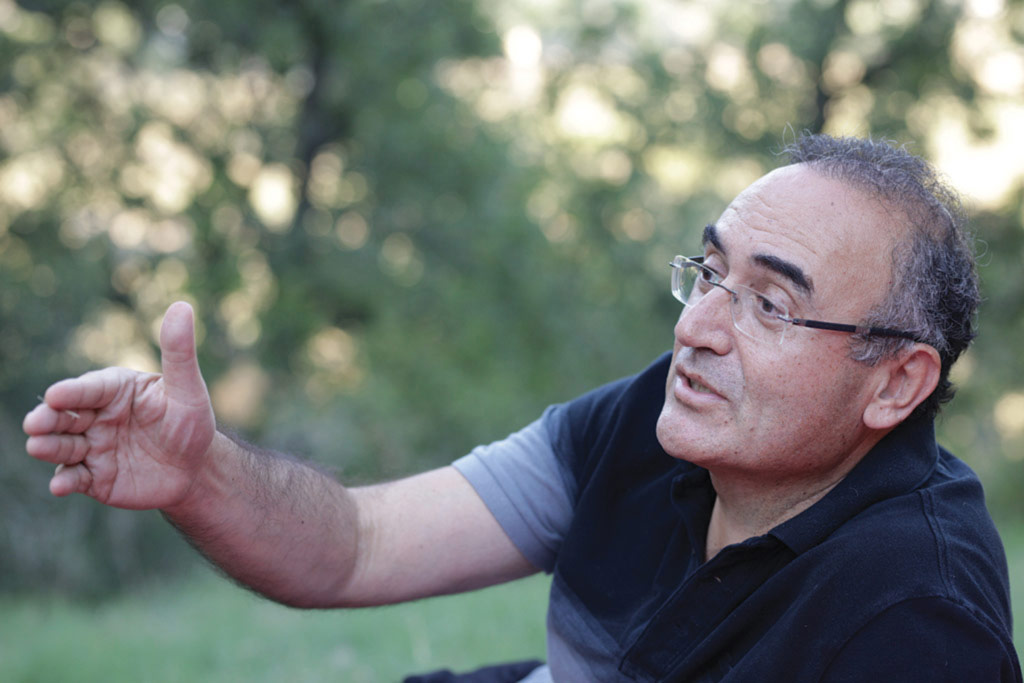
BOŞ ASKIYA ŞİİR YAZDIM
İlkokuldayken Orman Haftası’nda bir de şiir denemeniz olduğunu biliyoruz. Kendimi bildim bileli şiir yazıyorum. Türkçeyi öğrenmemdeki amacım şiire ulaşmaktır. Saatli maarif takvimleri vardı o yıllarda ve her gün bir yaprak koparıldığında arkasındaki şiir okunuyordu. Düşünsenize 365 güne 365 tane şiirin okunduğu kaç ev kaldı? Ben okuma yazmayı o takvim yapraklarının arkasındaki şiirlere ulaşmak için öğrendim. Benden bir yaş büyük ağabeyim okula başladığında bende onun çalışmalarına bakarak kendi kendime öğrendim hatta. Okulda da özel günlerde ödev gibi şiir yarışmaları düzenlenirdi, ben de Orman Haftası için bir şiir yazmıştım ama inanın ne yazdığımı bile hatırlamıyorum. Ama benim için şiir o değildi tabii. Ben şiirin ne olması gerektiğini 7 yaşında öğrenmiştim. Annemle babamın gardırobunda duran boş askıya bir şiir yazmıştım; “Üşümüyor musun?” diye sormuştum. Diğer askılarda elbiseler vardı ama o boştu. İşte o yaşlarda insan anlıyor, şiiri içinden geldiği gibi yazacaksın.
I WROTE A POEM FOR AN EMPTY HANGER
We know that you tried writing a poem during primary school for the Forestry Week. I have been writing poems for as long as I can remember. My purpose for learning Turkish was to reach poetry. There were traditional Ministry of Education calendars back then and whenever you removed a page, you could read a poem at the back of that page. Think of it, who is still reading 365 poems in 365 days? I learned to read and write for reaching those poems. I learned it by myself when my one year older brother started school. There would be poetry competitions at school for special occasions and I had written a poem for the Forestry Week but believe me I can no longer remember what I wrote. Of course poetry was something else for me. I had learned what poetry should be like when I was 7 years old. I had written a poem for an empty hanger in my parents’ closet; “Aren’t you cold?” I had asked it. Other hangers had clothes on them, but it was empty. Now one understands things at that age, you should write poetry as it comes from inside.
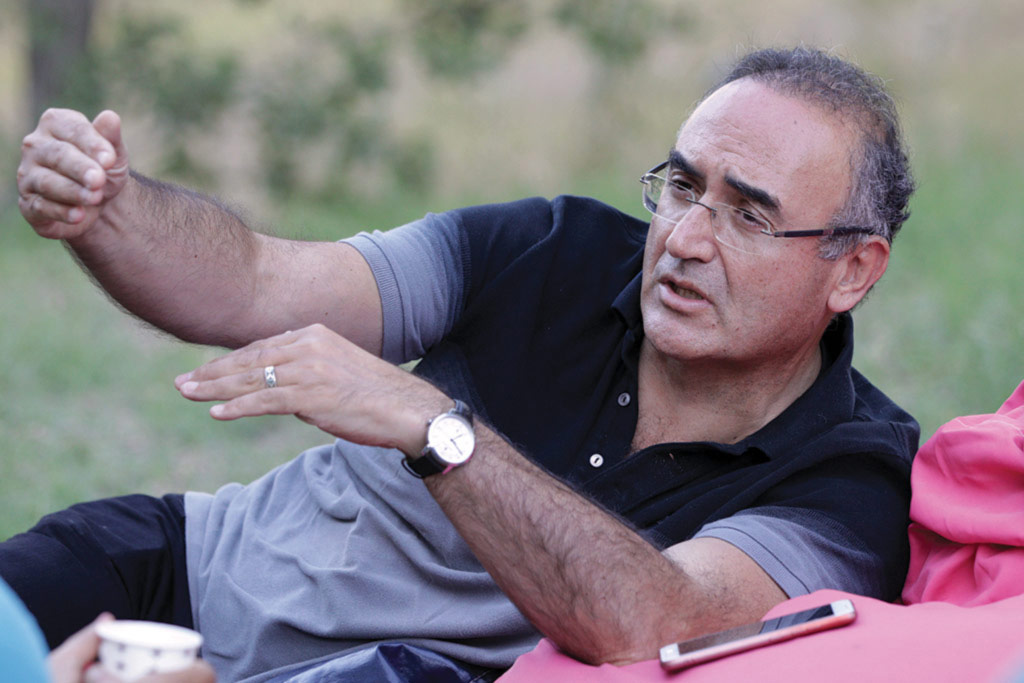
Siz tabii şiiri küçük yaşta anlamlandırınca lise yıllarınızda arkadaşlarınızın da bu konuda en büyük yardımcısı olmuşsunuz?
Çok kitap okuyan ve yazan biriydim. Ama edebiyat dersim başarılı değildi, okumak yazmak başka edebiyat başka. Aram mefailün failünle pek iyi olmadı.
Of course since you gave such a meaning to poetry at an early age, you have been very helpful in this topic to your friends during high school?
I wrote and read a lot. But, I was not good at literature, reading and writing is something but literature is something else altogether. I was never good at mefailün failün.
Hatta edebiyat ve coğrafya derslerinden kalmışsınız?
Tabii, bir de üzerine Edebiyat Fakültesi Coğrafya bölümünü bitirdim (gülerek). İşte o yıllarda arkadaşlarım güzel kızlara âşık olurdu. Onların da doldurmak üzere verdikleri anket defterleri vardı, güzel şeyler yazmak gerekiyordu. O zaman işte bana gelirlerdi yazmam için. Bir gün bir arkadaşım sevdiği kıza şiir yazacaktı benden istedi. Ben de görmediğim tanımadığım birine nasıl şiir yazayım demiştim, fotoğrafını getirmişti bakıp yazayım diye (gülerek). Tabii o dönemde dostluklar, arkadaşlıklar da başkaydı. Bir güzelliği, güvenilirliği vardı.
Indeed, you have failed literature and geography courses?
And I ended up graduating from the Geography Department which is part of the Faculty of Literature (laughing). Now, during those years my friends fell in love with beautiful girls. They had survey notebooks to be filled and you had to write something nice in there. It was then that they all came to me. One day a friend of mine asked me to write a poem for a girl he loved. I said how can I write poems for someone I never saw and he had brought her picture to me (laughing). Of course friendships were also different back then. There was beauty and trust.
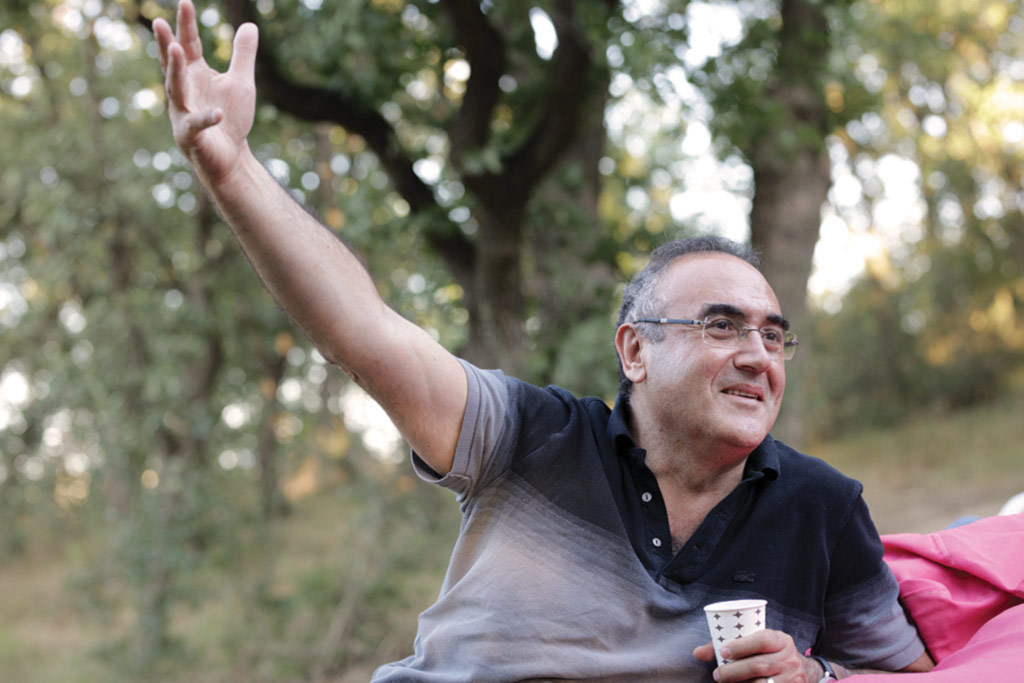
NAZIM HİKMET’İN BEBEK KOLEKSİYONU
Anlatılarınızda mutlaka şairlerin, yazarların bilmediğimiz özelliklerini, tutku ya da uğraşlarını öğreniyoruz. Bisikletle ilgili ayrıca bir sunumunuz da olmuştu. Başka örnekler de var mı?
Edebiyat dünyamıza baktığımızda batıdaki gibi koleksiyonerlikler göremiyoruz aslında. Yalnız Nazım’ın Moskova’daki evine gittiğimde bebek koleksiyonu olduğunu görmüştüm. Çoğu Nazım Hikmet Vakfı’na geldi, sergileniyor. Vera’ya sormuştum bu bebekler ona armağan mı verildi diye, kendisinin aldığını söylemişti, çok ilginç. Bir de bir kırmızı renkli şarap kadehi duruyordu vitrinde, çok güzeldi. Pablo Neruda’nın Nazım’a verdiğini söylemişti. Sabahattin Eyüboğlu’nu, Vedat Günyol’dan ve Muaalla Eyüpoğlu’ndan dinlemiştim kağıttan rüzgarda dönen fırıldaklar yaparmış ve arkadaşlarına hediye edermiş. Enteresan bir merakı varmış. Edip Cansever de Kapalıçarşı’da antikacıymış ama hiç ilgisi yokmuş, ortağı aşağıda müşterilerle ilgilenirken o yukarda şiir yazarmış hep. Fakat şunu biliyoruz; Cemal Süreya İstanbul’a gelir ve Cağaloğlu’nda küçük bir daire tutar. Papirüs dergisini çıkaracak ama cebinde para yok. O sırada Edip Cansever gelir içeriye ve yerdeki halıyı görünce siz bunun üstüne mi basıyorsunuz diyerek halıyı alır gider. Meğer halı antikadır ve halının parasıyla dergiyi çıkarırlar.
BABY DOLL COLLECTION OF NAZIM HİKMET
We almost always learn about different characteristics, passions or interests of poems and authors from you. You also had a presentation on bikes. Are there any other examples as well?
Actually we cannot see collectors in our world of literature as one can see in the west. However, I had seen a collection of baby dolls when I visited Nazım’s house in Moscow. Most are here on display at the Nazım Hikmet Foundation. I had asked Vera if these dolls were given as presents to him and she had told me that he was buying them himself; very interesting. And there was a red wine glass in the display cabinet, it was very beautiful. She told me that it was a gift to Nazım from Pablo Neruda. Vedat Günyol and Muaalla Eyüpoğlu had told me about Sabahattin Eyüboğlu; they said he used to make whirligigs from paper that whirled with the wind and give them as gifts to his friends. Interesting. And Edip Cansever was an antique dealer at the Grand Bazaar but never had any interest in the work; he used to write poems upstairs as his partner dealt with the customers down below. But we know this; Cemal Süreya comes to Istanbul and rents a small apartment at Cağaloğlu. He will publish the Papirüs magazine but he has no money. At that moment Edip Cansever walks in and upon seeing the carpet on the floor he says, Are you stepping on this?, takes the carpet and goes. Turns out that the carpet is actually an antique so they sell it and publish the magazine.
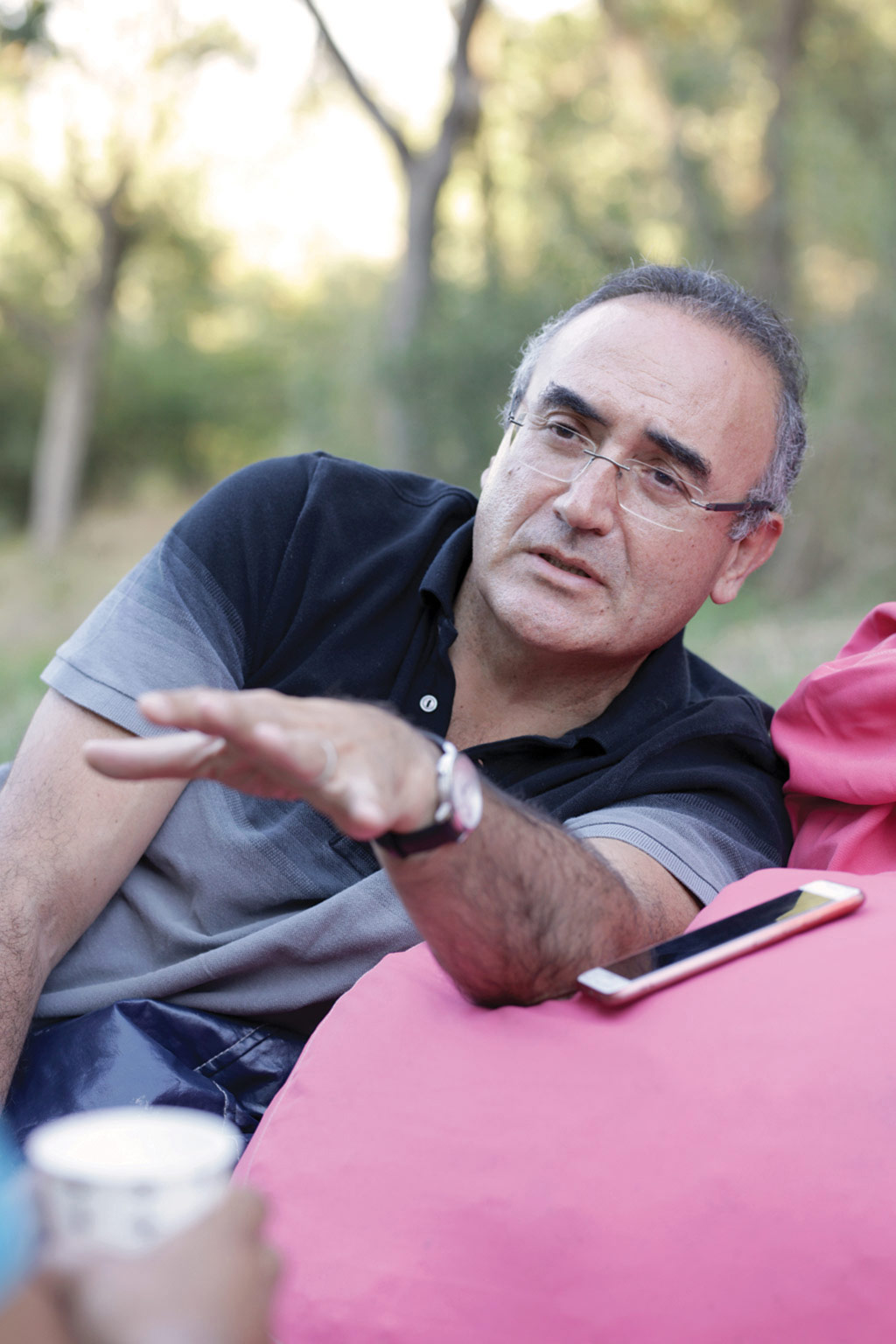
BİSİKLETİN DEĞERİ BİLİNMİYOR
Bisikleti ise edebiyatımızda bisikleti şairler nasıl görmüş diye ben araştırdım. Yani benim edebiyata kattığım bir şeydir. İlk bisiklet şiirini Tevfik Fikret yazmış ve “hayatı birkaç adım fazla koşturup yormak ” diyerek bisikleti beğenmemiştir aslında. Sonra Nazım Hikmet’in şiirinde var, velosipet diye geçer. Tarih gazetesinde bir haber hatırlıyorum 1895 yılında galiba, bir Avrupalı bisikletle İstanbul’a geliyor ve oradan Bursa’ya geçiyor. Ne yazık ki günümüzde Türkiye’de hala bisiklet bir çocuk, bir gençlik aracı olarak görülüyor, bisiklet kullananlar hep idealist insanların çabasında kalıyor. Kentin planlanmasında bisiklete yer verilmemesi, değerinin anlaşılmaması, anlatılamaması gibi nedenlerle benim de çocukluk anılarımda kaldı. Bisikletin bu toplumda hak ettiği yere kavuştuğunu maalesef söyleyemeyiz.
BICYCLES ARE NOT GIVEN THE VALUE THEY DESERVE
I made a research on how poets approached bikes in our literature. So, it is something that I contributed to literature. The first poem on bicycles was written by Tevfik Fikret who actually did not like them as he resembled riding bikes to, “making life run several steps more”. Then comes Nazım Hikmet’s poem in which they are called “velosipet”. I remember an article in the newspaper called Tarih, I think it was in 1895, a European comes to Istanbul on bike and from there goes on to Bursa. Unfortunately, a child in modern Turkey still considers bicycles as a vehicle for children or young people; those who actually ride bikes do so through their own idealistic efforts. Unfortunately, it remains in my childhood memories as well since bicycles are not taken into consideration when making urban plans and the fact that they have not been given the praise they deserve. We cannot say that bicycles have reached a spot they deserve in this society.
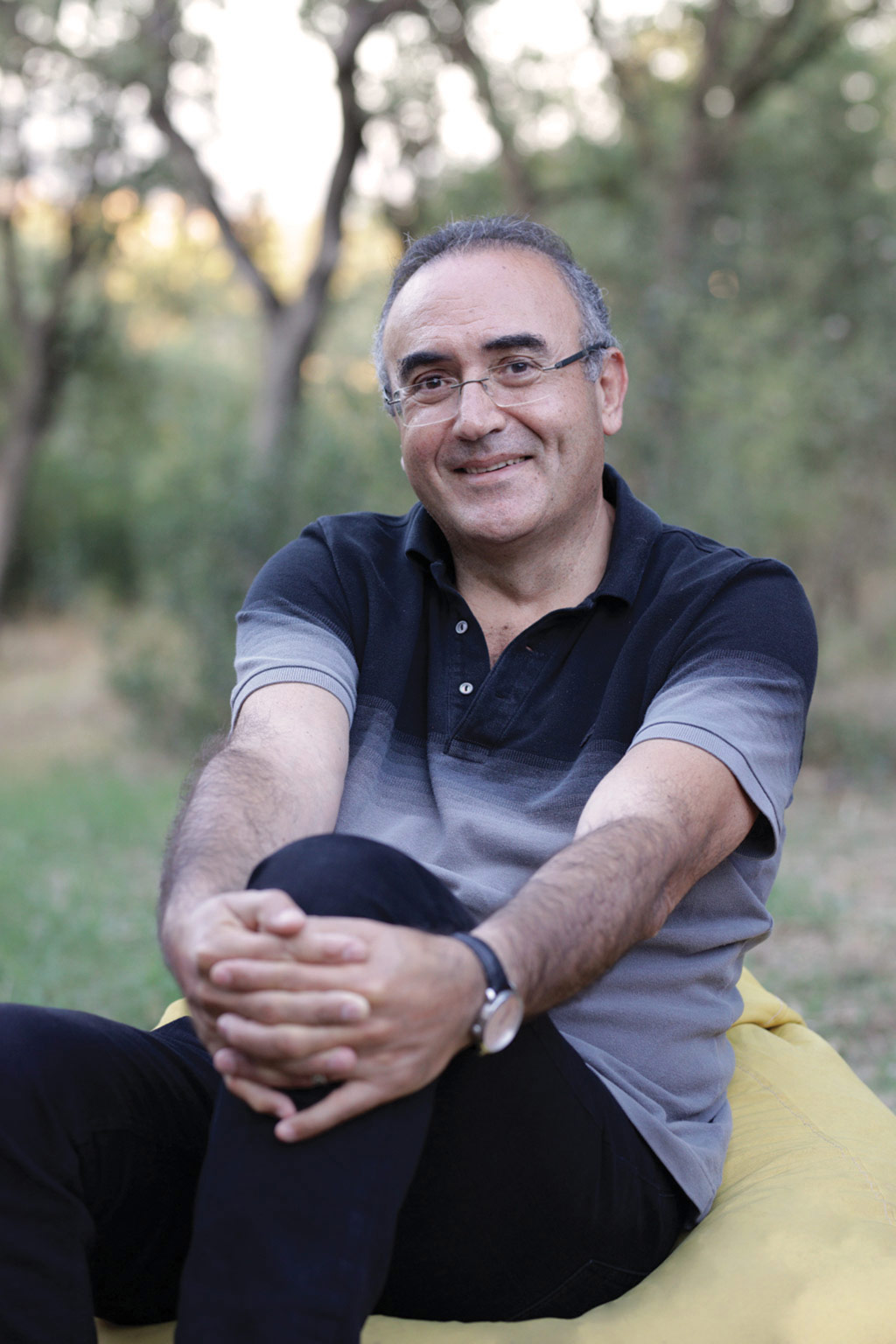
HAMAK İNSANIN ÇOCUKLUK AŞKIDIR
Hamak denince sizde nasıl duygu ve düşünceler uyanıyor?
Hamak insanın çocukluk aşkıdır ve hamak sevmeyen insan yoktur bence. İnsan hayatında bazı eşyalar, kendine ayrıca zaman ayırmak anlamında mutlaka bir yerde durur, sallanan koltuk mesela. Hamak da aslında ağaç demektir. Ağaç yapraklarının gölgesi, rüzgârın sesi demektir. Karadaki denizcilik hayatımızdır ki hamak denizcilerin ortaya çıkardığı bir kültürdür. İki ağaç arasında bir kıyı yapıp, sanki denize uzanmak gibi hazzı vardır. Trabzon’da da hamak vardı hem sahilde balıkçıların hem de devletin kamplarında köşede bir yerde dururdu mutlaka. Hamakta sallanmak sihirli bir şey… Hayatın bütün yorgunluklarından, sıkıntılarından uzaklaşıp kendi kendine kalabileceğin bir yer. Psikiyatr olsaydım hastalarını kanepeye değil hamağa uzatırdım (gülüyor). İnsan kendini daha özgür hissediyor, rahat bırakıyor, kabuklarından arınıyor çünkü.
HAMMOCKS ARE ONE’s CHILDHOOD LOVE
What do you feel and think when you hear the word hammock?
Hammocks are one’s childhood love and I don’t believe that there are people who do not like them. Some furniture has a unique place in people’s lives with regard to sparing time for yourself, e.g. rocking chairs. Hammock actually means tree. It means the shadow of the leaves of trees or the sound of the wind. It is our marine life on land, not surprising that it is a culture brought about by sailors. There is a certain delight in building a coast between two trees, like you are lying down on the sea. There were hammocks in Trabzon as well and there would be one at a corner somewhere at both the coasts where the sailors were and also in state camps. It’s magical to swing on a hammock… A place where you can stay away from all the toil and distress of life and be with yourself. If I was a psychiatrist I would have my patients lie on a hammock instead of a couch (laughing). Because one feels freer, lets one’s own self go and sheds away all outer shells.
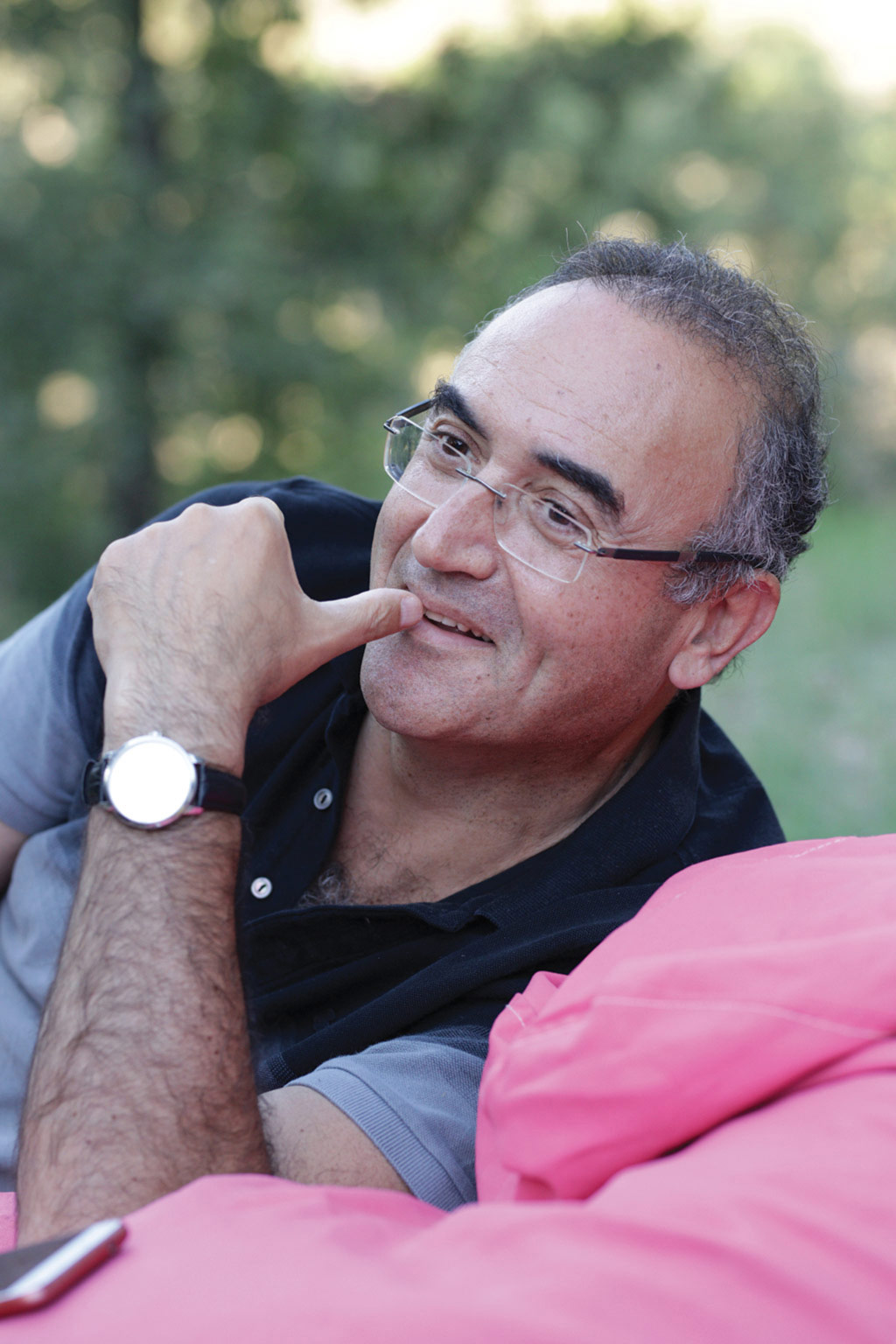
DOĞAMIZI VE TARİHİMİZİ KORUYAMIYORUZ
Gelelim o zaman azalan yeşile, koruyamadığımız doğaya. Yaptığımız tüm eylemler aslında yok ettiklerimizi yerine koyma çabasından öteye gidemiyor değil mi?
Biz doğamızı, tarihimizi koruyamayacağız kendimizi kandırmayalım. Çünkü bir ülkeye korumacılık düşüncesi müzelerden verilir. Bir ülkenin müzeleri varsa o ülkenin bireyleri doğasını ve tarihini korur. Nasıl ki bedenimize kan damardan yayılıyor, korumak düşüncesi de bir topluma müzelerin koridorlarından yayılır. Ne kadar müzen varsa korumacılığın o kadar güçlenmiş demektir. Bu konuda Türkiye Cumhuriyeti dünyanın en zayıf, en gelişmemiş ülkelerinden biridir ne yazık ki. Oysa Mustafa Kemal Atatürk, Cumhuriyeti kurmadan önce Ankara’da Etnografya Müzesi’ni kurma kararını çıkarmış Türkiye Büyük Millet Meclisi’nden. Atatürk her şeyi biliyordu çünkü ama biz onu böyle tanımadık. Mustafa Kemal Atatürk kronolojik sıralamayla anlatılacak bir insan değildi; büyük bir devrimci, büyük bir aydın, büyük bir entelektüeldi. Yıllardır müzeciliğin eski eşyaların konulduğu bir depo olmadığını anlatmaya çalışıyorum. Aydın insan anlıyor ama benim ülkem aydınların çok dolu olduğu bir ülke değil ki! Ne yazık ki bu yüzden doğanı, denizini, tarihini, her şeyini kaybediyorsun.
WE CANNOT PRESERVE OUR NATURE AND HISTORY
So now, let’s talk about the ever declining greenery and nature that we have failed to protect. Actually all our actions are not more than replacing what we have destroyed, isn’t it?
Let’s not fool ourselves; we will not be able to preserve our nature and history. Because the idea of preservation spreads out over a country from museums. If a country has museums, the individuals of that country preserve their nature and history. Just like blood spreading all over our body by way of veins, the idea of preservation spreads out from the corridors of museums. The more museums you have, the stronger your preservation aspect shall be. Unfortunately, Turkish Republic is one of the weakest and most underdeveloped countries in the world in this aspect. But Mustafa Kemal Atatürk had issued the decision to build the Museum of Ethnography in Ankara before founding the Republic. Because Atatürk knew everything, but we did not get to know him like that. Mustafa Kemal Atatürk was not an individual who could be taught chronologically; he was a great revolutionary, a great luminary and a great intellectual. I have been trying to tell desperately for years that museums are not places where old objects are protected. Intellectual people understand it, but my country is not one full of intellectual people! Unfortunately, that is why you end up losing your nature, sea, history and everything.
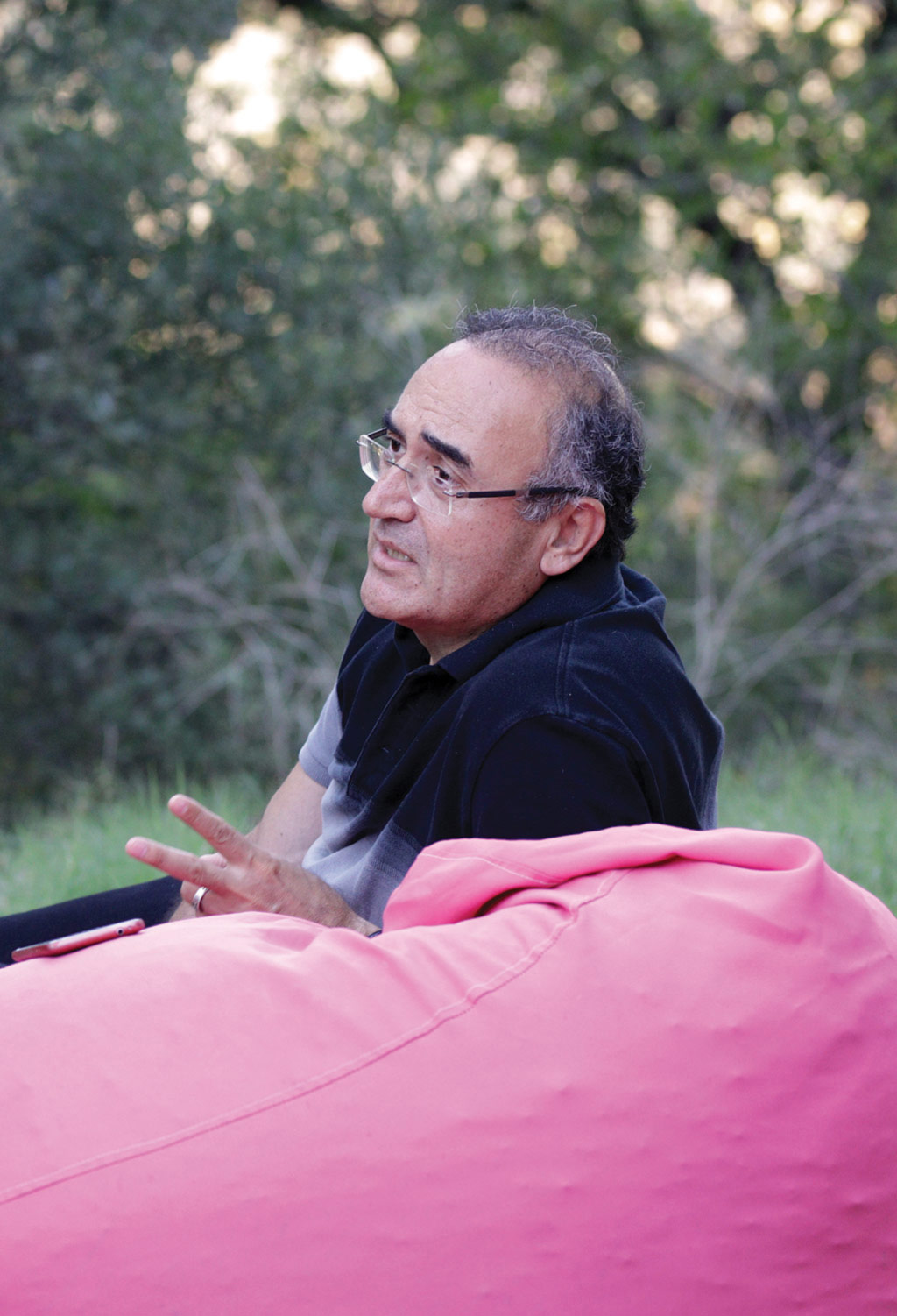
Siz çok fazla müze ve şehir geziyorsunuz. En çok etkilendiğiniz müzeleri tavsiye olarak almak isteriz mümkünse?
O kadar çok ki! İngiliz müzeciliği çok farklı bir yerde. Alman, Fransız, Belçika, Rusya, Hollanda müzeciliği hep farklı. Ama en son Amsterdam’da yenileme çalışmalarının ardından açılan Rijksmuseum’ı gezdim, çok beğendim. İsviçre’de Lozan şehrine bağlı Corsier-sur-Vevey’de Şehri’nden Charlie Chaplin müzesi kurmuşlar, muhteşem. Ama Lozan’daki Olimpiyat Müzesi de tam bir hayal kırıklığı, bu kadar zengin bir konu bu kadar kötü mü anlatılır! Dünyanın en büyük otomobil müzesi ise Fransa’nın Alsas bölgesinde. Yine Colmar’daki sanatçılara ait müzeler çok güzeldir. Roma’da heykel müzeleri görülmeye değer. Almanya’da da Köln’deki resim müzesi çok güzeldir. Bir de Paris’teki müze kafeleri çok seviyorum. Hem sevdiğim hem de kafesi en güzel olan müze ise d’Orsay’dır. Muhteşem eski bir gar olduğu için yapısını da çok seviyorum. Tam caddeye bakan arka tarafındaki eski gar saatinin dibinde oturup kahve içmek beni o kadar mutlu ediyor ki! Hele güneş ışıkları sızdığı zaman inanılmaz bir görüntü ortaya çıkıyor, çok şiirsel. Kızım Sorbonne Üniversitesi’nde okurken, orada günlerce oturur, kitap okur, yazar çizerdim. Anlatıyorum ya şimdi nasıl da özlemişim (gülerek). Oyuncak müzeleri arasındaysa Brüksel ve Stockholm oyuncak müzelerini tavsiye ederim. Londra’da ise Benjamin Pollock oyuncak müzesi çok ilginçtir. Pollock, 150-160 yıl önce tiyatro oyunlarında kağıttan, kartondan tiyatro sahneleri oyuncakları yapıyor.
You travel to a lot of museums and cities. Could you please give us some advice as to which museums have attracted you the most?
So many! British way of operating museums is at a much different level. Germany, France, Belgium, Russia, Holland; they are all very different. But I recently had the chance to visit the Rijksmuseum which was under restoration in Amsterdam and I loved it. They have built a Charlie Chaplin museum at the city of Corsier-sur-Vevey, part of Lausanne in Switzerland. However, The Olympic Museum at Lausanne was a disappointment. It is surprising how bad such a rich subject was displayed! The world’s largest automobile museum is in the Alsace region of France. Museums of artists in Colmar are really nice. Statue museums in Rome are worth seeing. Köln museum of paintings in Germany is really good. And I love the museum cafés in Paris. D’Orsay is the museum that I like as well as its café. I love the structure also since it is a marvelous old station building. Sipping coffee right underneath the old station clock overlooking the street makes me so happy! And wonderful, almost poetic scenery appears when sunlight seeps through. I would read and write there for days when my daughter was studying at the Sorbonne University. Now that I’m telling you, I realized how much I have missed it (laughing). I suggest the toy museums in Brussels and Stockholm. The Benjamin Pollock toy museum in London is interesting. Pollock made theater stages and toys from paper and cardboard about 150-160 years ago.
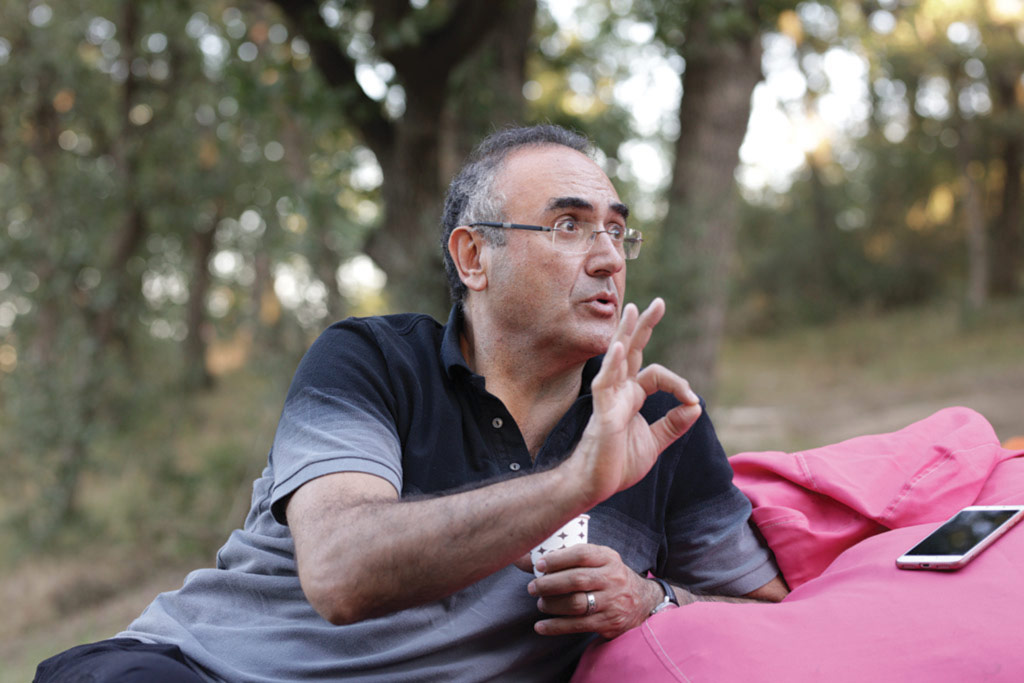
KEDİ MÜZESİ VE NUH’UN GEMİSİ MÜZESİ KURACAĞIM
Sizin bu kadar birikimle kurmayı planladığınız yeni müzeler mutlaka vardır?
İki yıl önce gazetede Hamburg’da bir kedi müzesi açıldığını okumuştum. Gittim gezdim ve çok hoşuma gitti. Ama hoşuma giden tarafı şu oldu; ben 7-8 senedir kedi müzesi açmak için uğraşıyorum. Hamburg’dakini görünce açacağım bundan çok daha güzel olacak dedim. Çünkü beklediğimin çok gerisindeydi. Koca Almanya kediyi böyle anlatıyorsa benim kuracağım var ya demek ki müthiş olacak (gülerek). Ayrıca Nuh’un Gemisi Müzesi kurmak istiyorum ve Nuh’un Gemisi ile ilgili yıllardır objeler topluyorum. Sonra kaleci müzesi ve sanatın oyuncakları müzesi kurma hayalim var. Sanatın oyuncaklarla anlatıldığı bir müze tasarlamak istiyorum. Dünyada bini aşkın oyuncak müzesi var ama sadece çocuğun dünyasında, sanatın oyun ve oyuncaklarla nasıl kurulduğunun tarihinin anlatıldığı bir müze yok. On yılı aşkındır da bunun için eser topluyorum. Baktığımda Yuri Gagarin’in uzaya çıkarken koluna taktığı saatten belli bir sayıda üretilmiş, o saatin bir örneğinden tutun da, Titanik’in 4 bin metre dipteki kazanından çıkan son kömüre kadar pek çok şey var benim odamda (gülerek).
I WILL BUILD A MUSEUM FOR CATS AND A NOAH’S ARK MUSEUM
I am sure you have new museums that you wish to build with such a deep cultural background?
I had read two years ago in a newspaper that a cat museum has been opened in Hamburg. I went there and liked it a lot. But there was one thing that I did not like: I have been working for 7-8 years to open a museum of cats. When I saw the one in Hamburg, I said to myself that mine will be much more beautiful. Because it was way more disappointing than what I was expecting. If this is how Germany tells the cat, mine will be spectacular (laughing)! In addition, I want to build a museum for Noah’s Ark and I have been collecting related items for years now. I also have a dream to build a museum for goalkeepers and one for toys of art. I want to design a museum where art is depicted through toys. There are over thousand toy museums in the world, but there is no museum where it is told how art is established through toys and games in the world of children. I have been collecting pieces for this for over a decade now. I have many items in my house from a copy of the watch that which Yuri Gagarin was wearing when he went to space which has been produced in limited numbers to the last piece of coal that was unearthed from the remains of Titanic that lies 4 thousand meters below sea level (laughing).
BURSA LUNAPARK KADAR RENKLİ
Biraz da sizin gözünüzden Bursa’yı dinleyelim mi?
Edirne, Bursa ve Trabzon; bu 3 muhteşem şehir İstanbul’un kardeşleridir. Trabzon artık üzülerek söylüyorum tam bir kültür erozyonu ve depremine uğradı. Bursa’da çok büyük bir tahribat, çirkin bir yapılaşma var ama hala güzelliğini koruyor. Büyülü bir şehir, çok garip. Edirne ise en avantajlısı aralarında. Sınır kent olduğu için kimse oraya gitmiyor.
Biz Bursa’yı Nazım’dan öğrendik. Sonra bayramlarda Uludağ’ın kartpostalları atılırdı en çok, 5-6 yaşlarındaydım hatırlıyorum. Kibrit kutularının üzerinde görüyordum Bursa’yı. Bursa Fuarı vardı Kültürpark’ta. Bursa deyince yeşil aklımıza gelirdi. Aslında hiç bilmediğimiz Bursa, Osman Hamdi Bey’in Kaplumbağa Terbiyecisi’ymiş. O mekânın Bursa’da olması ne kadar enteresan değil mi? Bambaşka bir yerden çıkıyor karşına.
Havacılık tarihinde müthiş insanlar yetiştirmiş, dünyanın ilk eski yazıları Sümer yazılarını okuyan Muazzez İlmiye Çığ’mış Bursa aynı zamanda. Giderek gözünün önünde büyüyor. Ahmet Vefik Paşa’ymış, ilk tiyatro varmış Bursa’da. Neymiş kardeşim Bursa, (gülüyoruz) havai fişek gibi hayatımızda büyüdü. Kibrit kutularından çıkan Bursa, birdenbire lunaparka dönüştü. Çok renkli, çok canlı, çok büyük bir medeniyet var karşımızda.
BURSA IS AS COLORFUL AS A PLAYGROUND
And now shall we listen to how you tell Bursa?
Edirne, Bursa and Trabzon; 3 gorgeous cities which are the siblings of Istanbul. I am sorry to say that Trabzon has undergone a cultural erosion and earthquake. There is a significant damage and ugly structuring in Bursa, but the city still preserves its beauty. IT is a magical city, very weird. Edirne is the most advantageous one among all three. No one goes there because it is a border city.
We learned Bursa through Nazım. Postcards of Uludağ would be sent during religious holidays, I remember that I was 5-6 years old. I used to see Bursa on matchboxes. Bursa Fair was organized at Kültürpark. Bursa meant green. The Bursa of Osman Hamdi Bey’s is The Tortoise Trainer. How interesting that the place depicted in the painting is in Bursa, right? You come across it in all unexpected places.
It has educated wonderful people in the history of aviation; Bursa is also Muazzez İlmiye Çığ who can read the oldest Sumerian scripts. It is also Ahmet Vefik Pasha and the first theater. How grand Bursa is (we are all laughing), it exploded in our lives like fireworks. The Bursa of matchboxes suddenly turned into a playground. We are facing a very lively, very colorful, very grand civilization.
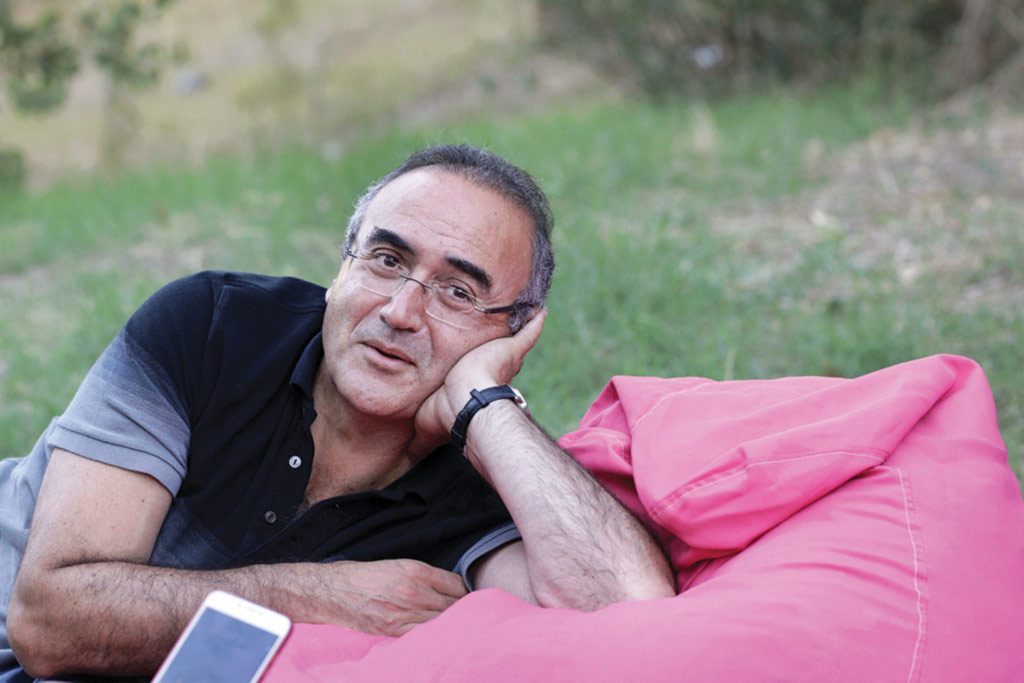
COĞRAFİ ZENGİNLİĞİNİN FARKINDA DEĞİL
Aynı zamanda bu kadar da talihsiz bir şehir olamaz. Coğrafya en büyük zenginliktir aslında. Coğrafya kaderdir derler ya doğru. Bakın ova, ırmak, göl, dağ, tepe deniz ne kadar farklı topografik yapılanmalar değil mi? Hepsinin olduğu iki kent var biri Hatay, diğeri Bursa. Bu kadar coğrafi zenginliği bir arada barındıran dünyanın birkaç şehrinden biridir ama Bursa bunun farkında mı? Orhan Veli’nin şiiri var ya “Gemlik’e doğru denizi göreceksin, sakın şaşırma.” Aslında orada anlatılan tam da budur. Bursa’yı bu şaşırtan güzellikleriyle anlatmamız gerekiyor. Bursa’nın talihsizliği ise ne yazık ki yanlış ekonomik planlama ve yapılanma ile sanayi kenti olarak algılanmasıdır. Oysa Bursa bu değil!
Sanayi olmamalı demiyorum ama doğru sanayiyi koymak ile Bursa’yı sanayi kenti yapmak farklı şeylerdir. Merinos tarihteki en eski örneklerden biridir. Ama o da bitti kalmadı ki, bir Sümerbank, Nazilli ne kötülüğünü gördük… Merinos bizim hafızamız, tarihimiz belleğimizdi. Üstünde Türk Malı yazan şeylerden bizi nefret ettirmeye çalıştılar. Bugün konuşulan ekonomik kriz değil, son 30-40 yılın bütün hatalarının iflasıdır.
IT IS NOT AWARE OF ITS GEOGRAPHICAL RICHNESS
It is also a very unfortunate city. Geography is the most important richness actually. Plains, rivers, lakes, mountains, hills, sea; they are all different topographic structures, right? There are only two cities which have them all. One is Hatay and the other is Bursa. It is one of the several most important cities in the world with such vast geographical richness, but is Bursa aware of this? You must know the poem by Orhan Veli, “You will see the sea towards Gemlik, do not be surprised.” Actually, this is exactly what is meant there. We have to understand Bursa with these surprising beauties. What is unfortunate for Bursa is that the city is perceived of as an industrial city due to wrong economic planning and structuring. However, Bursa is not that!
I am not saying that there should not be any industry, but placing the right industry and making Bursa a city of industry are two different things. Merinos is one of the oldest examples in history. But that is also over now, or Sümerbank and Nazilli… Merinos was our memory, our history. They tried to make us hate objects marked as Made in Turkey. What we are talking about now is not an economic crisis, but the result of all mistakes made over a period of 30-40 years.
ÖNCE KÜLTÜRLERİ KORUYACAKSIN
Atatürk’ün kültür politikası şovenist bir politika değildi. Türkiye Cumhuriyeti’ni Anadolu’daki bütün kavimlerin, topluluklarının, kültürlerin temsilcisi olarak görüyordu. Türk anlayışı da buydu. Kiracı değil toprak sahibiyiz. Hititler sazı yere koymaz, sapındaki ipiyle duvara asardı. Bugün hala bizim ozanlarımızın sazının ucunda asılı ip, bir Hitit geleneğidir. Atatürk’ün kültür politikası buydu işte. Bilgiye dayalı, kültür DNA’larını ortaya çıkaran, sahiplenen bir kültür politikası. Zaten Ankara’da Dil ve Tarih Coğrafya Fakültesi’ni de kurdu. Çünkü millet olmak, farklı diller, farklı tarihler ve coğrafyaların bütünlüğüdür. Çünkü “Dil, Tarih ve Coğrafya” bilimdir ancak bilimin ışığı altında bir araya gelebiliriz. Ne yazık ki ben kültür politikasının ne demek olduğunu bilen daha kimseyle tanışmadım. İşte tüm bu bilgileri müzede hafıza altın alacaksın. Müzeler toplumların hafızasıdır. Sen önce kültürleri koruyacaksın. Bir milleti millet yapan dilleri, tarihi, coğrafyayı koruyamazsan zaten sonu acı. Ne yaparlar arkeolojik kazı alanının üstüne çirkin çirkin binalar kurarlar, kurmuyorlar mı kuruyorlar zaten. Her şeyi rantiyede heba etmiyorlar mı ediyorlar. Çünkü kültür politikası ne demek olduğunu bilen yok.
YOU FIRST HAVE TO PRESERVE CULTURES
Atatürk’s cultural policy was not a chauvinist one. He saw the Turkish Republic as the representative of all tribes, communities and cultures in Anatolia. This was his understanding of Turks. We are not renters, we are land owners. The Hittites did not place the saz on the ground but hung it on the wall with a rope attached to it. The rope that is attached to the saz of our poets dates back to this Hittite tradition. This was Atatürk’s cultural policy. One that is based on knowledge which puts forth cultural DNAs while laying claim on what is ours. He founded the Faculty of Languages, Geography and History in Ankara for this reason. Because being a nation is the sum of different languages, histories and geographies. Because, “Language, History and Geography” is a science and we can only get united under the guiding light of science. Unfortunately, I have not yet met anyone who knows what culture policy means. Now, you have to preserve all this knowledge in our memories by way of museums. Museums are the memories of communities. You first have to preserve cultures. If you cannot preserve the languages, history or geography that makes a nation what it is, too bad for you. Then they will build ugly buildings on archeological excavation sites and which is what they are doing now. Everything is up for grabs. Because no one knows what culture policy means.
